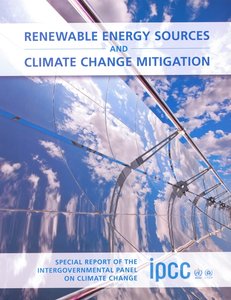Climate change, driven primarily by human activities such as burning fossil fuels and deforestation, poses a grave threat to our planet and its inhabitants. Rising global temperatures, more frequent extreme weather events, and the melting of polar ice caps are just a few of the alarming consequences we are already witnessing. In response to this urgent crisis, the transition to renewable energy sources has emerged as a critical strategy to mitigate the impacts of climate change.
The Role of Renewable Energy
Renewable energy sources, often referred to as clean energy, include solar, wind, hydroelectric, geothermal, and biomass energy. What sets these sources apart from fossil fuels is that they produce little to no greenhouse gas emissions when generating electricity. This makes them a sustainable and environmentally friendly alternative to coal, oil, and natural gas, which release large quantities of carbon dioxide (CO2) and other pollutants into the atmosphere.
- Reducing Greenhouse Gas Emissions
The most immediate and apparent benefit of renewable energy is its ability to reduce greenhouse gas emissions. As the primary driver of climate change, these emissions trap heat in the Earth’s atmosphere, leading to the planet’s warming. By harnessing energy from renewable sources, we can significantly decrease the amount of CO2 and other harmful pollutants released into the air. This, in turn, helps slow down the rate of global warming and its associated consequences.
Solar panels, for example, convert sunlight into electricity without emitting any CO2 during the energy conversion process. Wind turbines generate power by harnessing the kinetic energy of the wind, again with minimal emissions. The expansion of these technologies on a global scale is essential for achieving the necessary emissions reductions to limit global warming to manageable levels.
- Energy Independence and Security
Renewable energy also contributes to energy independence and security. Unlike fossil fuels, which often require importing from other regions or nations, renewable resources are locally available in many areas. This reduces our dependence on foreign energy sources and the geopolitical tensions that can arise from energy supply disruptions.
Moreover, renewable energy systems are less vulnerable to supply chain disruptions, making them a reliable source of power even in times of crisis. This energy resilience is a critical asset for communities and nations, ensuring that essential services remain operational during emergencies.
- Job Creation and Economic Growth
The transition to renewable energy creates new economic opportunities and jobs. The renewable energy sector has experienced significant growth in recent years, leading to job creation across various industries. From manufacturing solar panels and wind turbines to installing and maintaining renewable energy infrastructure, the green energy sector has become a cornerstone of economic development.
Investments in renewable energy projects also stimulate local economies and support research and development in clean technology. As governments and businesses continue to recognize the economic benefits of clean energy, we can expect further investments and job opportunities in this sector.
- Improved Air and Water Quality
Beyond its impact on climate change, renewable energy also contributes to improved air and water quality. The burning of fossil fuels not only releases CO2 but also emits harmful pollutants such as sulfur dioxide, nitrogen oxides, and particulate matter. These pollutants can have detrimental effects on human health and the environment.
In contrast, renewable energy technologies generate electricity without emitting these harmful pollutants. This leads to cleaner air and water, reducing the incidence of respiratory illnesses and improving overall public health. Additionally, cleaner waterways and reduced air pollution benefit ecosystems, supporting biodiversity and natural habitats.
Challenges and Solutions
While the benefits of renewable energy are clear, there are still challenges to overcome on the path to widespread adoption. One significant challenge is the intermittent nature of some renewable sources, such as solar and wind energy. These sources depend on weather conditions and sunlight availability, which can vary from day to day and region to region.
To address this challenge, advancements in energy storage technologies, such as batteries, are crucial. Energy storage allows excess energy generated during periods of high production to be stored for use during periods of low production. This helps ensure a consistent and reliable energy supply from renewable sources.
Another challenge is the initial cost of installing renewable energy infrastructure. While the long-term operational costs are typically lower than fossil fuels, the upfront investment can be a barrier for individuals and businesses. Government incentives, subsidies, and tax credits have been instrumental in reducing these barriers and encouraging the adoption of clean energy.
Conclusion
Renewable energy is not just a sustainable alternative to fossil fuels; it is a vital tool in the fight against climate change. Its ability to reduce greenhouse gas emissions, enhance energy security, create jobs, and improve air and water quality makes it a cornerstone of our efforts to mitigate the impacts of global warming. As we continue to invest in renewable energy technologies and implement policies that promote their widespread adoption, we move one step closer to a more sustainable and resilient future for our planet. It is up to individuals, businesses, and governments to embrace clean energy and work together to address the pressing challenge of climate change.



